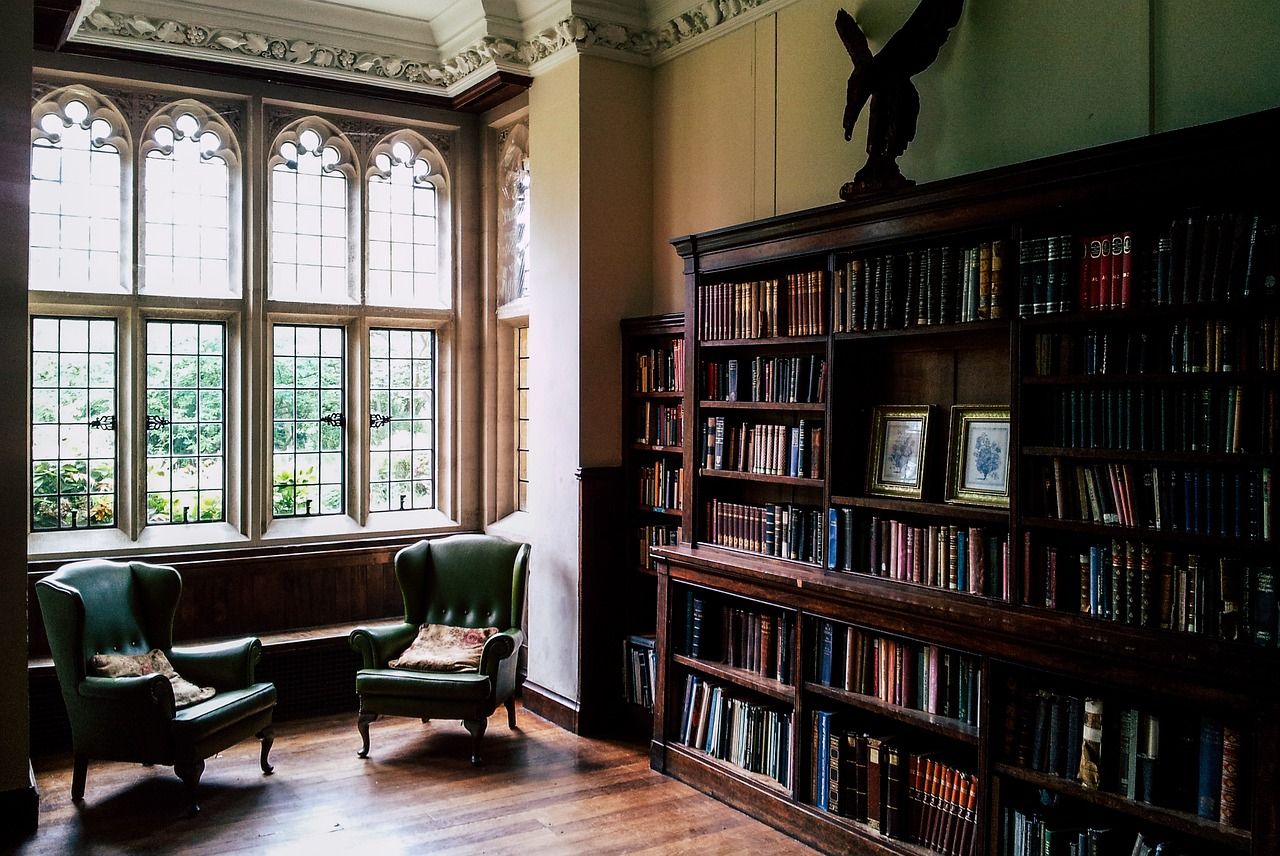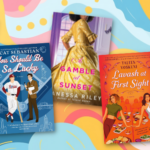
Should Historical Fiction Have Modern Sensibilities, Or Stick To Its Time?
Historical fiction is a genre that spans many other genres: historical romance, historical drama, historical crime, and many others. There are historical fiction stories aimed at readers of all ages, from adults to young children, but in all cases, there is a common trait: a fictional story is told against the backdrop of real-world events by a writer who lives (or lived) in a time after that period. Historical fiction is hugely popular, with famous books and series including works such as Wolf Hall, Outlander, and I, Claudius, all of which spawned well-known TV adaptations, as well as more recent gems like The Porcelain Moon, A Million to One, and The Body in the Blitz. Historical fiction can feed the knowledge of adults who already have a fascination with a particular historical period or spark the interest of younger readers as an accessible and interesting way to get into learning about history.
Historical fiction’s popularity has inevitably led to a great deal of critical discussion around the genre, but one particular debate has always been at the forefront: should historical fiction stick to the attitudes of its time or bring in modern ideas and attitudes? On the one hand, historical accuracy is one of the main draws of this genre, but on the other, there are many historical viewpoints and attitudes that were normalised at the time but have been recognised as racist, sexist, or otherwise bigoted today, and it’s understandable that both writers and readers wouldn’t want this replicated in the stories they read. So, should historical fiction look at events and characters from a modern perspective?

The Case for Modern Ideas
While the present isn’t exactly a utopia, there are many eras of the past where attitudes and social norms were considerably worse. Ideas that we recognise as unpleasant, harmful, or bigoted today were standard at several points in history, including ones that are very popular as settings for historical fiction. Prior to the 20th century, many societies were deeply sexist — in the Victorian and Regency eras, two common settings for historical romances or dramas, women had very few personal rights and could only participate in society as an extension of their husbands or fathers except in very rare circumstances (for example, if they happened to be rich, upper-class widows with no close male relatives). The pre-Civil War United States has also provided much inspiration to historical fiction writers. However, this was the time of chattel slavery, when African American people were legally considered to be property and subjected to horrific violence by white plantation owners. At many points in history, such as the medieval period or Ancient Rome, the marrying off of children — sometimes incredibly young children — was a regular occurrence amongst the upper classes as a way of building and maintaining alliances.
Readers may not want to spend time with characters who perpetuate or normalise structural sexism, racism, or child exploitation. Bringing in modern ideas can help to mitigate this — if a main character lives at a time where structural bigotry is the norm but fights against it, the reader is likely to feel a lot more sympathetic to them. While the idea that you can tell a main character by their modern-day attitudes is frequently made fun of in discussions about historical fiction, it’s understandable that this is a common trope. While there were many women throughout history who fought against women’s rights, such as the Women’s National Anti-Suffrage League in the UK, a group of women who actively opposed women having the right to vote, it’s not surprising that the majority of historical fiction set at this time features heroines who are part of the Women’s Suffrage movement instead and may bring the Suffragettes’ views even more into line with those of modern readers. Even if the characters don’t do this directly, stories can be written in such a way that it’s clear that the author doesn’t condone the problematic views of the time.
The Case for Sticking to the Time
On the other side of the debate, there are the readers who argue that it’s important for historical fiction to represent the views and positions that were commonly held at the time when the story is set. One of the reasons that people read historical fiction is because they want to immerse themselves in that historical period, and because of this, they’re looking for accuracy and authenticity. If someone wants to read a drama, romance, or adventure that contains modern-day viewpoints, there are plenty of options in contemporary fiction for them to choose from.
The introduction of modern-day perspectives and ideas can seem clumsy and awkward in historical fiction. For example, it would be jarring to have a female main character in a Victorian-era novel espousing third-wave feminist talking points during an era when first-wave feminism was only just beginning. Additionally, having a female protagonist who behaves like a 21st-century woman means that the achievements and actions of historical women can be inadvertently portrayed as less significant. For example, Elizabethan-era maven Bess of Hardwick gained her position of immense power by marrying up the social ladder four times in a row, giving her an eventual status that rivalled that of Elizabeth I herself. While a woman having to marry for power is uncomfortable to modern readers, it was a savvy move for Bess in her time and ended up becoming a path to much greater autonomy than she could have expected from any attempt to strike out on her own.
Modernising attitudes in a story to make the reading experience more palatable for a modern audience can also have the side effect of whitewashing history, downplaying the very real harms and inequalities that a historical period perpetuated. If, for example, a historical romance set in the Regency era has a cast of non-racist white characters, it implies that racism in this era was the work of “just a few bad apples” rather than a widespread, structural system. A huge number of Regency-era aristocrats and gentry were only able to afford the huge, beautiful houses where Regency romances are often set because the owners of these houses benefitted from the transatlantic slave trade; ignoring this in an attempt to not include racism in a story means glossing over a part of history that should not be forgotten.
Accuracy Can Surprise You
While the debate on historical fiction can be contentious, there’s another angle that might surprise some readers. Occasionally, “of its time” can be more modern than we might think. The Tiffany Problem is a term describing moments when history seems oddly contemporary, and including these moments in historical fiction, although accurate, can seem jarring or like a deliberately humorous invention. While many people talking about the Tiffany Problem give the film Gladiator as an example, my introduction to the concept of advertising in the Ancient Roman games came from the Asterix comics — one story has advertisers carrying placards around the Circus Maximus, an actual historical fact rather than a satirical jab at modern-day commercialism.
Many inclusions in historical fiction that critics have decried as “modern-day inaccuracies” are actually fact. For example, there have been Black people in Britain since the Roman era, so having Black people in a medieval-era, Regency, or Victorian historical fiction is not anachronistic, no matter what some commentators might say. The same is true for fiction that has LGBTQ+ characters — while there were many periods where people couldn’t be out due to social stigma or criminalisation, gay and trans people have always existed. In some cases, LGBTQ+ people even had experiences that were as progressive, or sometimes more progressive, than people in the present day — such as Lucy Hicks Anderson, a Black trans woman born in the Victorian-era US whose childhood doctor recommended an affirming approach and social transition, despite it being the 1880s.
While historical fiction should strive to be as accurate as possible, it can do this without perpetuating or excusing problematic views. It’s possible for authors to strike a balance between dropping a 21st-century viewpoint into a protagonist who is supposed to have lived centuries ago and uncritically presenting racism, sexism, or other forms of bigotry as acceptable instead of problematic. It’s also important for authors to remember that history can be surprising and that there have always been people challenging bigotry in all of its forms.
If you’re looking for recommendations of historical fiction stories that tell the tale of real people, try 8 Books that Fictionalise Real Historical Figures. For stories that centre Black people in historical settings, look at Black Girls of YA Historical Fiction.










